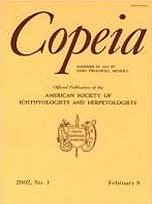The early life history of the conger eel, Conger oceanicus, has been the focus of only a few studies. These have emphasized larval development and distribution; little is known about its metamorphosis and settlement. To quantify changes in body proportions, dentition, and pigmentation of metamorphosing C. oceanicus during these transitions, we collected leptocephali, glass eels, elvers, and juveniles during 1993, 1996, and 1998 (n = 166) in coastal ocean and estuarine waters in southern New Jersey. We developed a staging scheme based on morphology, pigmentation, and dentition that categorized the developmental state from the leptocephalus to the juvenile stage. Our study demonstrated that, although the early life history of C. oceanicus occurs over large spatial scales (10,000s of km2), metamorphosis can take place over only a few 10s of km2. We conclude that selected body proportions (e.g., percent preanal length) are better indicators of developmental state than total length for metamorphosing C. oceanicus. Our results also suggest that certain metamorphic stages are associated with specific habitats. Further, the spatial differences in morphology, dentition, and developmental stage across the ocean to estuary transect suggest that oceanic individuals are earlier in development than those caught within the estuary and that many aspects of metamorphosis (e.g., changes in body morphology, dentition, and habitat use) co-occur with their migration into estuaries.
How to translate text using browser tools
1 September 2003
Aspects of Metamorphosis and Habitat Use in the Conger Eel, Conger oceanicus
Geoffrey W. Bell,
David A. Witting,
Kenneth W. Able
ACCESS THE FULL ARTICLE

Copeia
Vol. 2003 • No. 3
September 2003
Vol. 2003 • No. 3
September 2003




